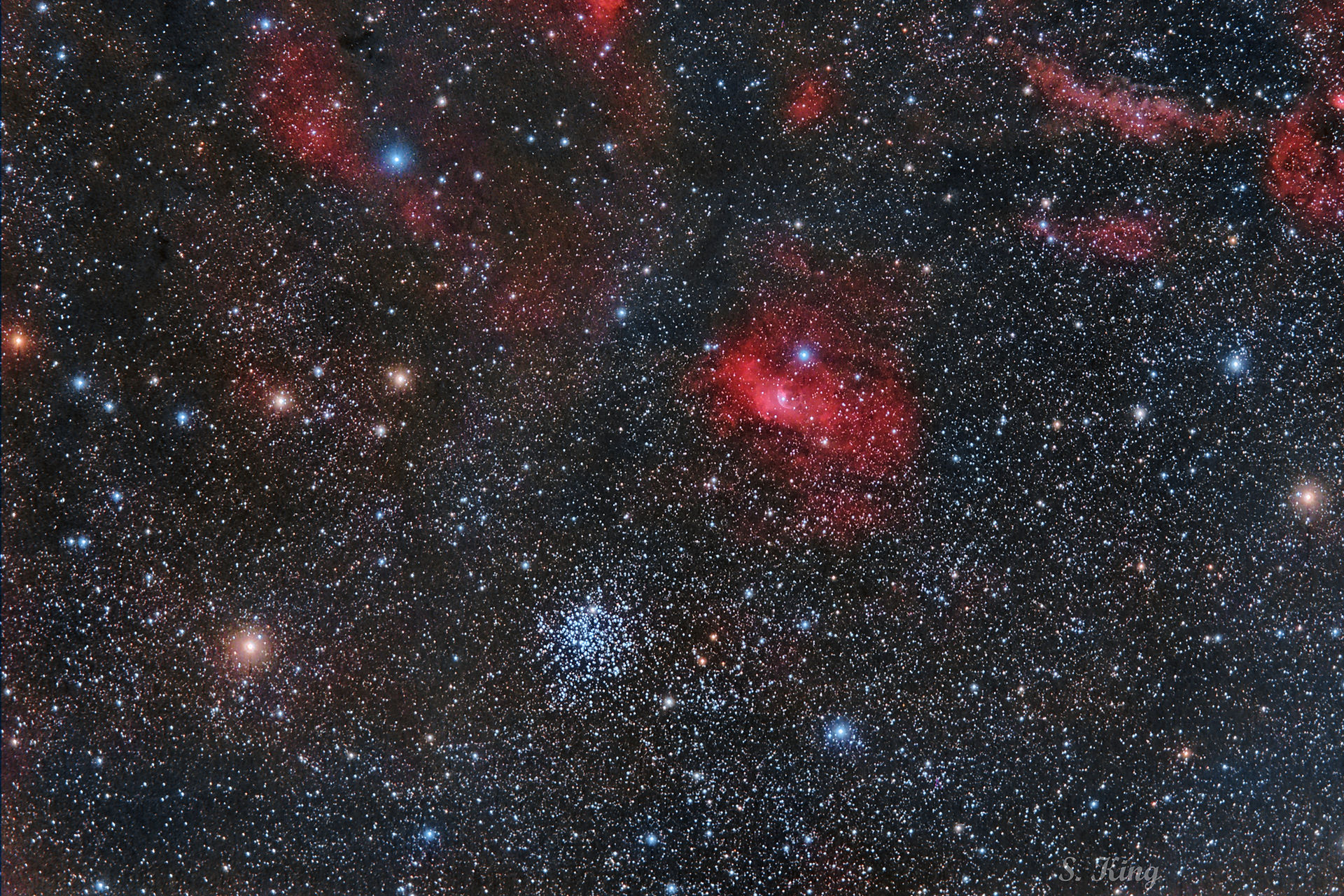
About Me
My name is Steve King. I was married for 50 wonderful years to my wife Kathleen until she passed away in January of 2019. I continued with the astrophotography, but, was very lonely as one can imagine. After a few years on my own I was able to reconnect with a woman (Carole) that I had dated when I was just out of High School, but, hadn't communicated with for 63 years!!! I found her by using the internet! At this point in time we were just old friends who lived several hundred miles apart. We stayed in touch with occasional emails. In 2023 we decided to finally meet, and, we fell in love. Now we are a couple for the rest of our lives!!!!! I guess some things are just meant to be!!
I'm a father (2 boys and a girl), a grandfather (several times over), and a great grandfather.
When I was a young boy my father started making a 6" mirror for a Newtonian telescope. He got the pyrex mirror blank shaped, but, the blank never got aluminized, so, the telescope never was finished. However, the efforts he put into the mirror and the testing he did on it ignited an interested in telescopes that has never faded. While raising our children I did manage to purchase a few inexpensive "kids telescopes" and the children (and I) enjoyed them. However, it wasn't until I retired that I was able to really start to look into this hobby.
I started in astrophotography in earnest when I was in my early 70s (a few years after retiring). Sixinias (in the Astrophotogtraphy forum) provided invaluable guidance and encouragement on how to get started in this hobby, and, for this I will always be indebted. With a Canon T3 camera, an Orion ST-80 achromat telescope and a Nexstar Alt/Az mount (no guiding and only 30 sec exposures) I began. I also purchased BYEOS to control the camera. Processing was initially performed with GIMP. After about a year I graduated to an Equatorial mount (ZEQ25) but still unguided. At that time an Orion ED80 was loaned to me by an AP Forum member named Frazzles (what a kind gesture) which produced greatly improved images without the "blue halos" so common with achromats. After about a year I finally took the plunge and purchased an Orion Magnificient Mini Autoguider package and started guiding. Next I had the Canon camera modified (by Gary Honis) to capture the hydrogen alpha emissions so prevalent in many nebulae. This opened up a whole world of new targets. Next dithering was added to help reduce the noise in the stacked images. Finally I purchased an Explore Scientific ED102 CF telescope to help with the smaller targets. I then added a William Optics WO Star71 (ii) for WFOV imaging.
Because of the bad light pollution I decided to upgrade my equipment and changed from the DSLR camera to a cooled camera with a Filter Wheel. The Filer Wheel holds narrow spectral band filters (3 nm spectral bandwidth Hydrogen, Oxygen and Sulfur filters) to reject most of the light pollution while still allowing all of the signal coming from nebula targets. This approach greatly reduces the noise in the images while producing much sharper images. I also started using a program named APT (Astro Photography Tool) which controls the telescope mount, the camera, the filter wheel, the guide camera and the focus motor (a new addition to my equipment). Very convenient to have one program control all the equipment from inside the house!!!
As mentioned above, my processing started with GIMP. I moved on to Photoshop, and finally to PixInsight which is a software program dedicated to astrophotography image processing.
The above describes the setups I used during all the time I lived in Santa Cruz, Ca. After reconnecting with Carole and finally moving to Woodland Hills, Ca, to be with her, I found the new location was not well suited to my fancy astrophotography equipment (too many trees). So, I now have left all my fancy astrophotography equipment in Santa Cruz and am using the new all-in-one Seestar S50 to do astrophotography. The images typically aren't as good as with the fancier equipment, but, it is very easy to use and is still a lot of fun. I've added a "SEESTAR IMAGES" section to the MY FAVORITE IMAGES tab and it's growing all the time.
MY EQUIPMENT & SOFTWARE
Telescope/Camera/Mount: Seestar S50
Tripod: Neewer Tripod
Software: PixInsight


Thanks for visiting my website. I hopy you enjoyed your visit.
Steve King